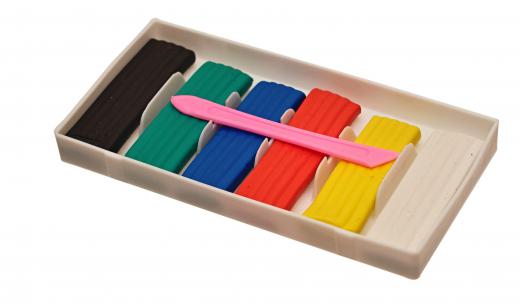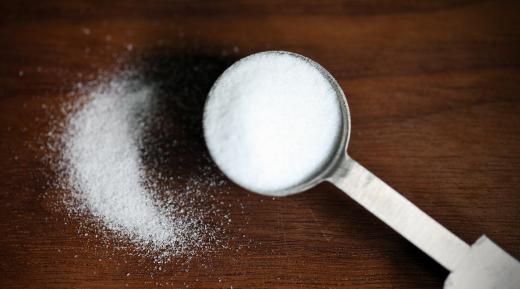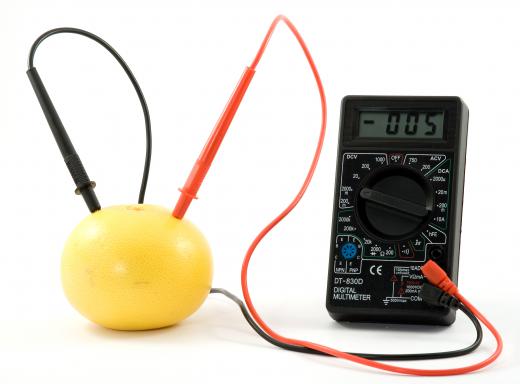How do I Choose the Best Simple Science Experiments?
 Jessica Ellis
Jessica Ellis
Simple and easy science experiments can be a wonderful way to get kids and teenagers interested in the wide world of science. Instead of being dreaded forms of homework, science experiments can encourage children to think and reason scientifically. Whether needed for a science fair, class project, or even some educational summer fun, here are a few simple examples of science projects that can educate and entertain.
Electricity is a lot cooler when it is shown as homemade lightning bolts. For this experiment, take a large piece of Styrofoam and cut a small piece off. Attach the small piece to an aluminum pie plate, creating handle on the plate. Rub the Styrofoam™ vigorously against a person's hair for a few moments, then place on a table. Take the pie plate by the handle only and drop on top of the Styrofoam™, then touch the aluminum to create extremely cool sparks.

This experiment demonstrates the power of static electricity, and can be a good way to show that the energy that creates electricity is in all around. It can be a good way to get young people interested in lightning and the history of electricity. For even cooler sparking results, perform the experiment in a darkened room.
To figure out just how those lava lamps really work, try this interesting experiment. Fill a clear glass jar ¾ full of water and add a few drops of food coloring. Then, fill the remainder of the jar with vegetable oil, allow the oil and water to separate, and slowly pour salt on top of the oil. Watch as the oil divides into slowly descending blobs through the colored water, just like a lava lamp. For extra sparkle, add a handful of glitter with the oil.

The kind of all science experiments may be the classic volcanic eruption. To create, model a cone-shaped volcano with modeling clay, scooping out a center section for the lava. Pour baking soda, red food coloring, and just a little dish detergent or bubble bath into the hollowed section. Very carefully, add vinegar, and get ready for the volcano to go off. In addition to looking cool and making a mess, this can be a great way to get interested in both the chemical reactions that cause the eruptions, and how a real volcano works. Because of the eruptive power of this experiment, it should be done outdoors or in a stain-proof environment.

There are many excellent ways to get kids interested in science. If children show interest in the above science experiments, consider searching online for additional ideas. There are whole archives of science experiments designed for children available on the interned. Additionally, consider purchasing a kid's scientific magazine subscription for a child fascinated by science. Many offer fun and easy experiments to try each month, that will help children develop their passion for the scientific world.
AS FEATURED ON:
AS FEATURED ON:















Discussion Comments
@Fa5t3r - If the teacher has a passion for the subject I think that can help. I still remember some of the chemistry science experiments one teacher in particular used to perform for us. They weren't exactly simple science experiments because he wouldn't let us do them ourselves, but they involved all kinds of different colored liquids and smokes and various explosions and funny noises.
He would do it at the end of class and try to relate it to whatever simple experiment we had been doing, but his were always much more exciting.
@Iluviaporos - If anything I would play down what might happen in an experiment so that children don't get their hopes up too high. Get them excited about the magic of seeing a seed sprout or a kite fly. Don't set them up so they will only be impressed with an explosion or something that seems like it's out of a TV show.
Which is not to say that you should never let them see anything that is that awesome, but cool science experiments that rely on shock value are eventually going to end up seeming boring to students, so you've got to find some other way of keeping their attention.
Even if the experiment is supposed to be simple, you should try it yourself before demonstrating to your students. Not only because you will want to make sure the science experiments work, but also because you'll want to hit the right beats when you're explaining it.
One of my friends wanted to introduce a science component to her class of young students and she set up this experiment that a friend recommended where they would pour salt into a jar filled with oil and water and observe what happens.
She hadn't done it before and had assumed that there was a long term change in the oil, but it was really just to watch the way the salt and oil interacted with the water as it fell.
So she had all the kids excited that something eventually was going to happen and they were quite disappointed when she had to tell them that there was nothing more to the experiment. There's nothing worse than getting excited over nothing.
Post your comments